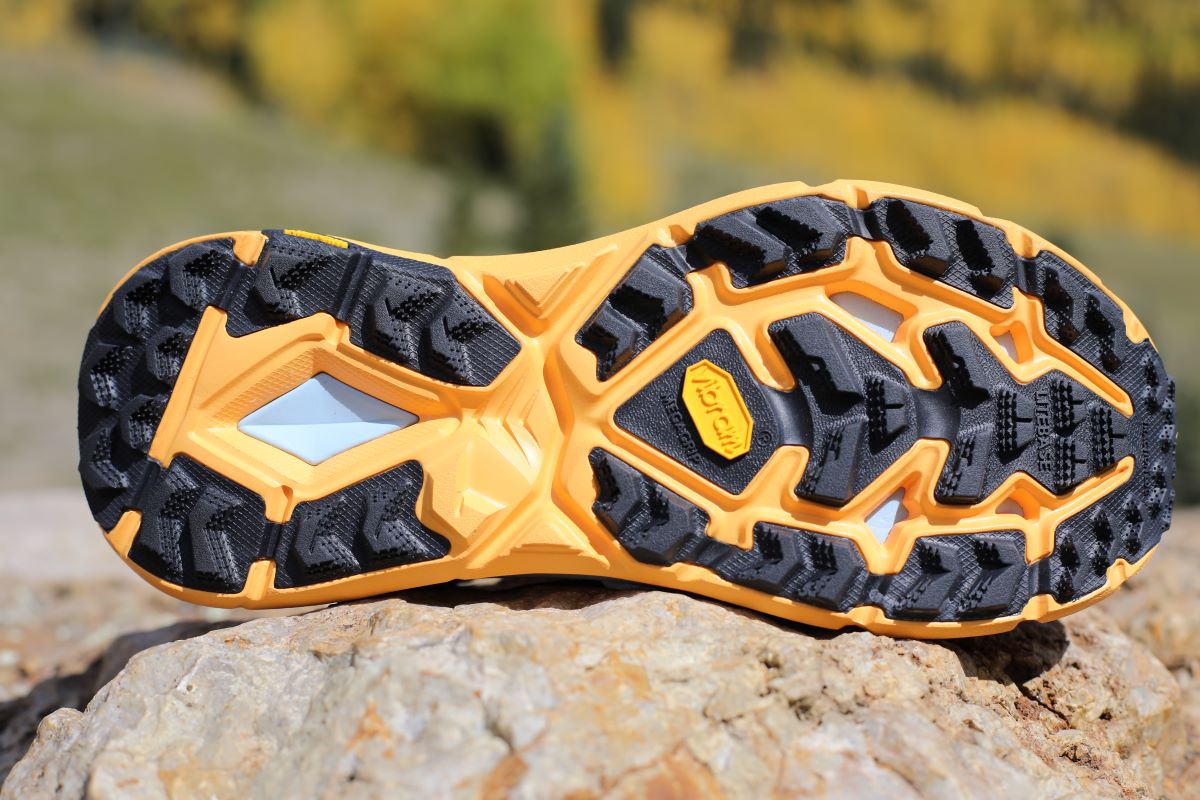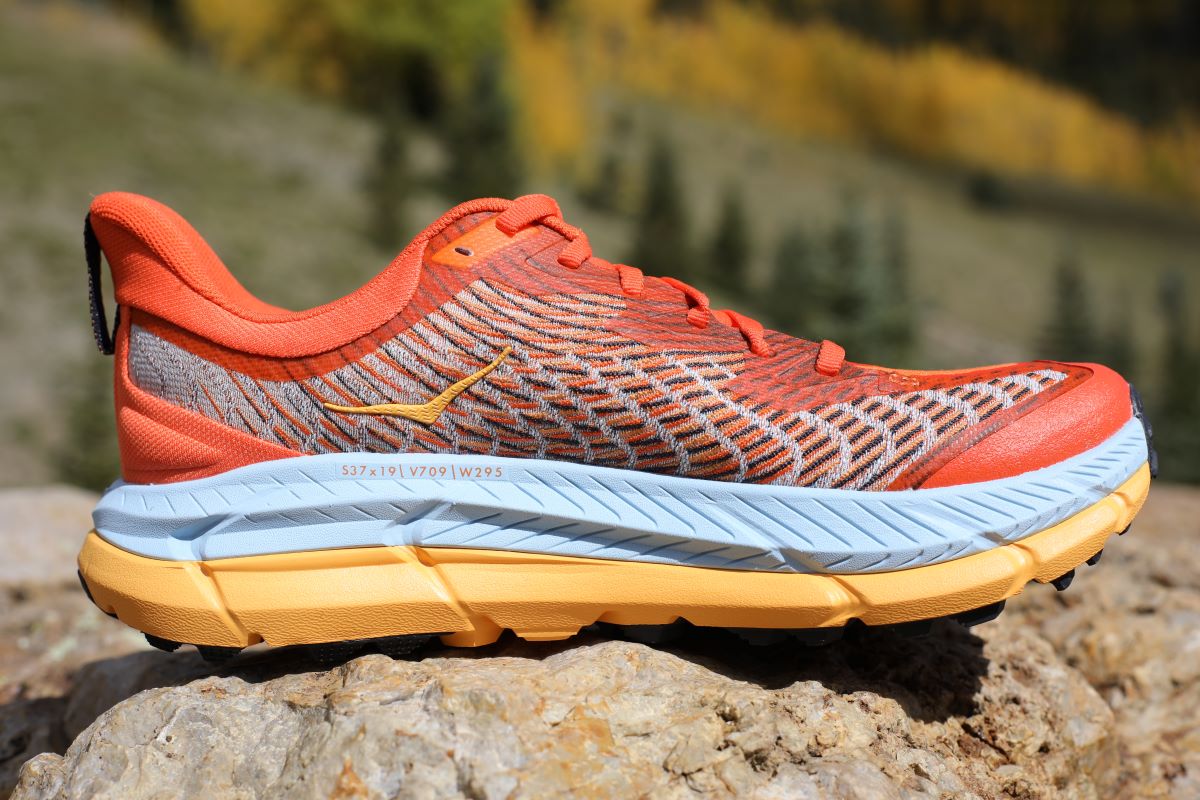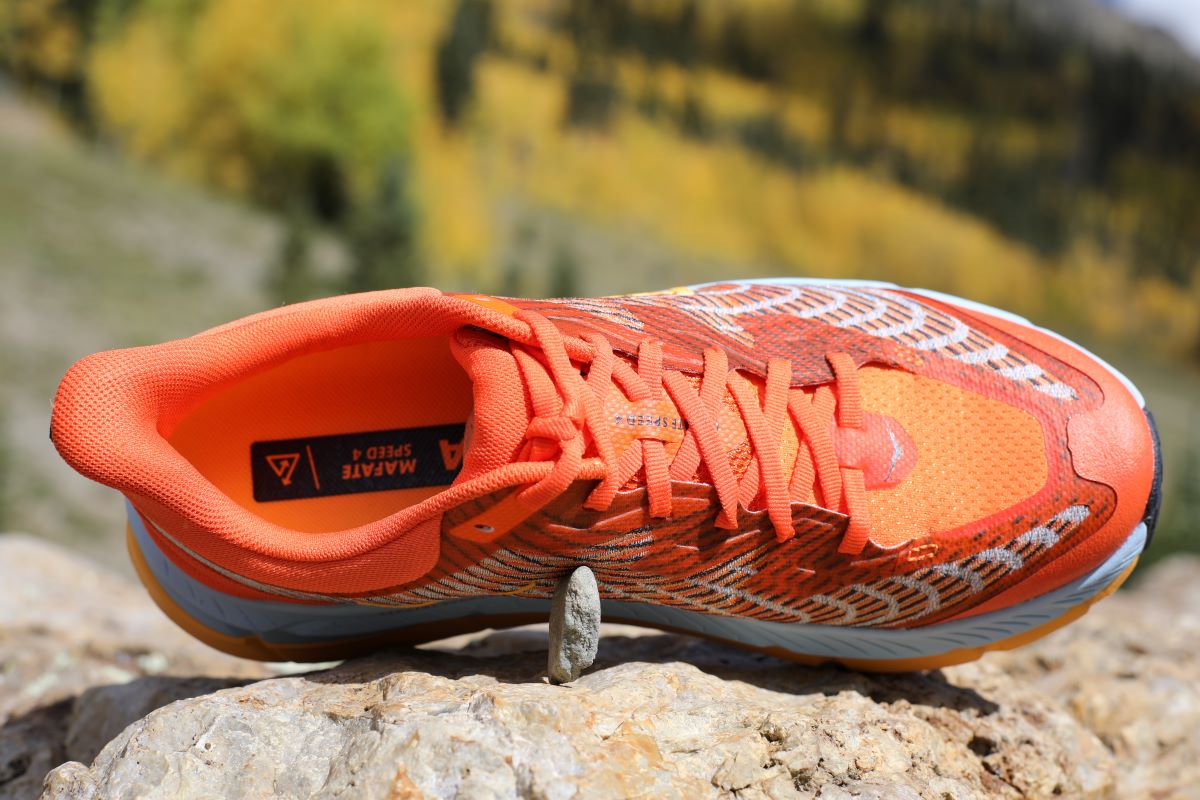The Hoka Mafate Speed 4 ($185) is the latest, and most changed, iteration of the popular trail running shoe. Featuring a Litebase Vibram Megagrip outsole, it is lighter than its precursor. With improved lockdown via an updated upper, it is ready to tackle technical trails at speed.
It boasts 5-millimeter lugs, and our tester tried it over muddy, rocky, dry, and wet conditions, and felt confident in the grip throughout.
Watch our detailed review to learn more about this excellent trail running shoe.
Shop the Men's Hoka Mafate Speed 4Shop the Women's Hoka Mafate Speed 4
Hoka Mafate Speed 4 Review Transcript
Hey, and welcome to Trail Trials, the video review section of iRunFar.com. My name is Travis Liles and in this video, we’re looking at the Hoka Mafate Speed 4. Let’s check it out.
Let’s talk about the basics of the Hoka Mafate Speed 4, the fourth iteration of the shoe. I’d argue that it’s probably the most changed of all the iterations of this shoe. And maybe the most confusing is how it relates to the rest of the trail line, or where it fits in with what we’ve known so far with the Hoka trail line.
Let’s start off with the basics. It has an actual weight of 10.4 ounces (295 grams) for a men’s size 9, it has a 4-millimeter heel-to-toe drop, and it has aggressive lugs. It’s always been called a speed shoe, but it’s heavy and rigid. This shoe is not that anymore. Let’s talk about that.
Hoka Mafate Speed 4 Outsole
We’ll start off by looking at the Hoka Mafate Speed 4 outsole.
This is Vibram Megagrip and it’s Litebase. This was on the Hoka Zinal, the first time that Hoka used it, and it’s a lighter-weight compound of the Vibram Megagrip. Read our Hoka Zinal review to learn more about its outsole. If you’re familiar with Megagrip, which is also on the Hoka Speedgoat 5 — here’s our Hoka Speedgoat 5 review — this is going to have that same feel. It works really well across lots of different terrain — does pretty good on slick, does good on dry, and on rock, and overall is a really nice tread compound.
The Hoka Mafate Speed 4 has 5-millimeter lugs, so they’re pretty deep. For Hoka and trail shoes in general, this is a nice depth of tread for even muddy conditions.
Another feature, which was also on the Hoka Speedgoat 5, is tiny little bumps all over on the tread pattern. These add extra surface area, extra grip when these things are biting down, so it’s not just the lug — it’s the lug plus all these little spikes. It’s supposed to add some additional performance.
Obviously, that’s something really hard to judge, but I do think that in general, it’s a well-gripping shoe that does awesome in a lot of different terrain. I’ve worn it in muddy, rocky, dry, and wet conditions, and this shoe does a nice job of grip overall. It feels more on the aggressive side of grip than moderate. So in general, it’s nice for getting into some nasty stuff.
From a lug pattern standpoint, if you’ve ever worn a Mafate or seen one in the past, the under package on the Hoka Mafate Speed 4 looks pretty similar. There are lots of lugs, fairly deep, with forward-facing lugs in the front for going uphill. There are deep lugs toward the back, a chevron pattern across the board, and reverse lugs in the back for downhill and for braking.
Hoka Mafate Speed 4 Midsole
There is no rock plate in the Hoka Mafate Speed 4, as is typical for Hoka, with the exception of the Hoka Tecton X, which has a carbon plate, which is sort of a rock plate. Watch our Hoka Tecton X review to learn more about that shoe.
The midsole foam is dual-density, which I’ll talk about in a second. But in step with most Hoka, they’re not using a rock plate because of the foam stack that’s in here — while not a big stack like, say, the Speedgoat — there’s plenty of foam. When something hits it, it sort of conforms to the shape versus deflecting, if you will, like a rock plate might do. I’ve worn this in lots of different terrain and never really noticed foot fatigue from sharp objects, from rocks or anything like that being a problem.
The midsole that this shoe uses is ProFly+ foam. There are two types of foam in the midsole. The bottom layer is a little bit stiffer, and you can feel that by poking your hand into it. The top layer is a little bit softer. So the softer part of the shoe sits right underneath your foot, and then the firmer part is on the ground — adding to its responsiveness.
This ProFly+ lands on the responsive side of a Hoka shoe — more toward the springy side. If I was to describe this shoe, it is a softer-feeling shoe, but it’s not like a lazy, recovery day, kind of soft. It’s soft but bouncing — gives you something else.
Overall, I would say a very nice responsive type of shoe. This ProFly+ foam is in some of the more advanced Hoka shoes. This is, I believe, in the Zinal, or at least a version of the ProFly foam is in the Zinal. It’s in some of their carbon shoes, like the Hoka Carbon X. So, this is a foam compound that definitely falls on the performance side of Hoka’s line. Again, it has the softer foam right underneath your foot, and then a little bit more rubberized feeling at the bottom for durability and springiness.
When you look at something like this compared to the original Hoka Mafate Speed, you see how much this shoe has been refined over time. There was a lot of big foam chunkiness in the older shoe. The tread pattern looks fairly similar, but it was a chunkier shoe, and about a half to a full ounce heavier.
Hoka Mafate Speed 4 Upper
The Hoka Mafate Speed 4 has lots of overlays. It has a pull tab on the back. Love it or hate it, it’s there, but you can see a much more refined take than in previous versions of this shoe.
The shoe has an engineered mesh, or jacquard mesh, upper. Same thing again as we saw on the Speedgoat 5, but I would argue, though, that the Mafate Speed 4 does a much better job of locking in your foot. There is a lot more room if you need it to lock down. Whereas the Speedgoat 5 was a little baggier, this upper has mesh all over. But you do have some overlays playing some parts here.
There is a little bit around the heel, to add some structure, and then some around the laces that work their way down the middle of the shoe. This provides a good lockdown. If you think about a responsive shoe that you’re wearing on a trail, you want that lockdown, and this does a really great job of locking your foot down.
Your foot sort of sits down inside the shoe. So in terms of cornering, descents, and moving around on technical terrain, the shoe sort of sets you down inside of it a little bit. You’re recessed in it. It adds to that feel of secureness, while also having an upper that, while lightweight, keeps everything locked in.
It does this better than really any of their other trail running shoes, this is up there in terms of fit and secureness of the upper. Especially with this new material, which in general, the trail shoe market has struggled to provide this engineered mesh, plus control. I do think this shoe has done probably one of the best jobs of that.
You’ve got a pretty decent amount of room in the toebox. I would say this is a more rounded toe versus pointed, so thumbs up for that, especially for long distance and for comfort. There is a rubber toe bumper at the front. Your outsole wraps up to the apex, to the pointy part. It’s fairly hard, and then you’ve got these rubber overlays on top of the upper that are adding some extra protection.
If we flip it around to the heel portion, it has this heel tab that I don’t like. I know it’s listed as something like helping you get on your shoe easier. But I feel like it’s one of those things where if I’m in gravelly stuff or sand, it creates a slide for rock to get down into the back of my shoe. It’s not terrible. If you’ve got thicker running socks, they tend to fill that gap and it’s not a problem, but it is a little area where debris can get into the shoe. That said, you do have a gusseted tongue, and you’re going to be able to keep debris out from the upper parts.
It also has a slightly padded tongue, more padded than say, the Speedgoat 5. It’s not just a piece of very thin fabric; there’s a little bit of foam in here. It still isn’t a ton, but because the shoe wears a little more locked down, I don’t have to pull quite as tight. So not having as much foam in the tongue is less of a deal.
Hoka Mafate Speed 4 Overall Impressions
In closing, I think the Hoka Mafate Speed 4 is the shoe the Hoka Speedgoat 5 should be — check out our Hoka Speedgoat 5 review. In terms of what the Speedgoat 2, 3, and 4 were, this is a more logical next step of that shoe than the Speedgoat 5. I know these are two different shoes, but the Speedgoat is a popular enough shoe that a lot of people have familiarity with it. They know what that shoe was all about. The Speedgoat 5 changed the dynamic of that. This shoe does a better job of stepping in and taking that Speedgoat 5 mantle and carrying it.
I say that because you’ve got a nice, locked-down upper. You have a responsive midsole. You have an aggressive tread pattern on the bottom. This shoe does a better job at technical, at rolling, at locking your foot down on tight cornering, and at protection. This one runs the gamut of trail running in any terrain.
I don’t care what the terrain looks like, and I don’t care what type of trail I’m going to get onto — the Mafate Speed 4 can do it. I don’t feel that same way about the Speedgoat 5. Example being, if I’m going to do a very long descent that’s super technical — old Speedgoat 4? No problem. Speedgoat 5? I’ve got to think about it. I’m going to tighten up my laces. If it’s wet, the upper is going to get loose.
The Hoka Mafate Speed 4 excels in those situations like the previous versions of the Speedgoat, where the Speedgoat 5 is a little loose. This is a tighter package overall. This is the do-it-all shoe for me, as it relates to the Hoka line. But on its own, if you’re looking for that shoe that does a little bit of everything — manages rugged terrain as well as flat, is locked in, and has maximal cushion without being a slow, recovery day shoe — this is a really good option.
Shop the Men's Hoka Mafate Speed 4Shop the Women's Hoka Mafate Speed 4
Call for Comments
- Have you run in the Hoka Mafate Speed 4? What are your thoughts?
- How does the Hoka Mafate Speed 4 compare to previous versions of the Mafate Speed?
- How do you compare the Hoka Speedgoat 5 with the Hoka Mafate 4?
[Editor’s Note: If you’re affiliated (i.e., an employee, ambassador, etc.) with a shoe brand, please share your relation in each of your comments on this article. Thanks!]
Our Favorite Trail Running Shoes
Check out our Best Trail Running Shoes article to learn about our current favorite trail running shoes!





